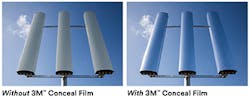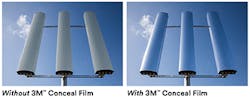6 Wireless Trends for 2017
The atmosphere is alive with vibrations, sounds, and waves. While the first wireless technology began harnessing these amazing resources more than a century ago, we are just now realizing their full potential to improve lives across the planet.
Self-driving cars. Remote tracking of vitals for patients. Global access to education. Wireless technologies are poised to radically change the way we live and work, and improve the overall quality of life for everyone.
So where will the wireless industry take us in 2017, and ultimately through the next several years? As the industry braces for a rapid increase in demand, a focus will intensify on developing the infrastructure needed for an onslaught of changes.
Anywhere, Anytime Connectivity
Cellular networks are now the primary media for connecting people. According to the 2016 Ericsson Mobility Report, global mobile subscriptions are growing 3% per year, totaling 7.4 billion in 2016. Broadband subscriptions are growing approximately 20 percent per year, for a total of 140 million subscriptions in 2016.1 And the Internet of Things is expected to reach around 25 billion connected devices by 2020.2
Whenever, wherever — soon we will all be connected. That sentiment leaves mobile carriers scrambling to increase capacity and coverage to keep up with consumer demand, and to build new cell sites to stay competitive.
As we move toward worldwide communications, the industry will supplement approximately 5 million macro-base stations and about 11 million small cells between now and 2020, according to ABI Research.3,4 These less-intrusive attachments to existing street light poles will expand cellular capacity on a permanent basis.
Moreover, the industry will need to ensure that the connection experience is virtually instantaneous. It is fine for traditional applications to take several seconds to download. But a passenger’s life will depend on an autonomous car’s ability to respond immediately. A surgery being remotely supervised must be viewed in real time. Dramatically reducing latency from seconds to milliseconds will be a major goal to help ensure the availability, evolution and safety of emerging wireless solutions.
Wireless technology is also transforming society’s — as well as the industry’s — concept of sustainability. As we address environmental concerns through increased energy efficiency and other green initiatives, the definition of sustainability has broadened to include social and economic aspects. This creates new questions that must be addressed, such as:
• How can global connectivity improve education and create jobs?
• How will the general population respond to dramatically increased access to information and freedom of speech?
• What will make investments in this new way of living attractive to investors?
• What kind of impact will it have on society as a whole?
These aren’t questions to be taken lightly. Nor are the hurdles standing in the way.
5 Challenges
With the accelerating need for higher capacity, coverage, and performance, expansion of wireless infrastructure worldwide faces significant challenges, both technical and societal. We have pinpointed 5 major challenges to be addressed:
1. Radio Frequency (RF) Performance
2. Tower Loading
3. Fiber and Power Access
4. Security and Monitoring Techniques
5. Site Acquisition
Challenge #1
Improved RF Performance
A key challenge to RF performance is passive intermodulation distortion (PIM). PIM occurs when 2 strong RF signals interact nonlinearly within cables, coaxial connectors, or objects, distorting the signal. (See Figure 1.) Think of fuzzy radio reception. PIM generally happens when contact interfaces are oxidized, contaminated, rough, or loosely connected, allowing for corrosion. PIM signals cause interference and reduce uplink channel quality. It’s a problem in many wireless systems, but is most noticeable in Frequency Division Duplexing (FDD) LTE cellular base station antennas, transmission lines, and related components.
Figure 1. Passive Intermodulation Distortion (PIM) depicted by surrounding gray lines in Transmitted Signal.
Because PIM can be difficult to troubleshoot, the industry will continue to adopt easy-to-use, high-impact weatherproofing technologies to protect exposed connections with tapes, mastics, cold shrink, heat shrink, closures, and boots.
Challenge #2
Reduced Tower Loading
Another consequence of rapid wireless industry growth is outdated towers. Many built even within the past few years simply aren’t designed to sustain larger, more complex networks. Excess weight and forceful winds can loosen equipment, snap mounts, and cause structures to collapse entirely.
In 2017, the industry will continue to reinforce existing tower structures where possible, but also will place increased emphasis on new designs that are strong enough to withstand ever-increasing weight loads, and more aerodynamic product designs for increased wind tolerance.
Challenge #3
Greater Fiber and Power Access
Billions of new connections will require significant investments in new infrastructure to meet growing worldwide demand. Right-of-ways must be negotiated and permits must be obtained for miles of trenches, with accompanying investments in equipment and manpower.
The year ahead will see the industry working to control costs without sacrificing reliability. Companies will continue to seek new ways to improve product quality, extend product life, reduce installation time and labor costs, and design new products and solutions for reducing total cost of ownership for an attractive return on investment.
Challenge #4
Improved Security and Monitoring
As wireless connectivity extends beyond home and office computing to physical security, healthcare, fleet management, industrial automation and other applications, security has become a major concern. Almost monthly, the media report on another computer network hacked for private and personal data.
With this industry becoming a system of increasing complex networks hosting billions of more devices, there is a growing need to ensure secure connections and track and supervise performance through remote monitoring. Lives, businesses, economies, and governments, will depend on monitoring to protect sensitive information while keeping networks running at peak performance. This includes up-to-the-second tracking to identify poor coverage, capacity issues, and to address problems quickly.
The wireless industry will continue to invest heavily in ensuring the best security and monitoring technology available. To support the explosive growth in data volume, mobile operators will manage and plan their network resources accordingly to accurately and extensively monitor and analyze network traffic for optimization. These systems will constantly evolve as new threats and network issues arise to keep networks safe and reliable for all users.
Challenge #5
Facilitating Site Acquisition
"We need it. We want it. But not in my back yard!" Not In My Back Yard, or NIMBY, is a term growing in use to show opposition to new developments in close proximity to residents, even when the residents agree the development is necessary. NIMBY issues often involve hazardous waste, prisons, chemical plants, and other sites perceived as dangerous or intrusive. For the wireless industry, one of the primary objections is the visual pollution caused by wires, antennas, cable junction boxes, and other infrastructure.
For wireless communications to continue to thrive, the industry needs innovations to minimize visual pollutions. Many of the solutions offered today are focused on camouflaging wireless infrastructures as a different type of structure that is more acceptable and in tune with the neighborhood in which they reside: church structures, rooftop fixtures, and trees. But other opportunities are arising for the use of reflective technology that overlays wireless infrastructure to take advantage of the full visible spectrum while remaining RF-transmissive. Ugly wireless infrastructure is "absorbed" into aesthetically pleasing landscapes, helping to lower resistance to infrastructure expansion from land and building owners, and the community at large. (See Figure 2.)
Figure 2. Impact of Conceal Film on Panel Antennae.
Great Minds
As we move toward worldwide connectivity, it becomes increasingly important to work side-by-side with the wireless industry to help increase RF performance, avoid tower loading, improve access and network security, and help reduce visual pollution.
We are actively collaborating with the technical community to facilitate its pending growth spurt, developing exceptional new technologies, and working to keep costs down by putting existing technologies to new uses.
Through innovation, dedication to quality, and cost-conscious development, it is possible to help create a future in which wireless technology can make life better, easier, safer, and more affordable for all.
Endnotes
1. Ericsson Mobility Report on the Pulse of the Networked Society, June, 2016, page 4. Retrieved from Ericsson website: https://www.ericsson.com/res/docs/2016/ericsson-mobility-report-2016.pdf
2. Ericsson Mobility Report on the Pulse of the Networked Society, June, 2016, page 10. Retrieved from Ericsson website: https://www.ericsson.com/res/docs/2016/ericsson-mobility-report-2016.pdf
3. ABI Research Report, Macro Basestations, 2Q 2016. Retrieved from ABI Research website: https://www.abiresearch.com/market-research/product/1023435-macro-basestations/
4. ABI Research Report, Outdoor Small Cell Forecast, Q4 2015. Retrieved from ABI Research website: https://www.abiresearch.com/market-research/product/1022014-outdoor-small-cell-forecast/
Save
Save
Save


